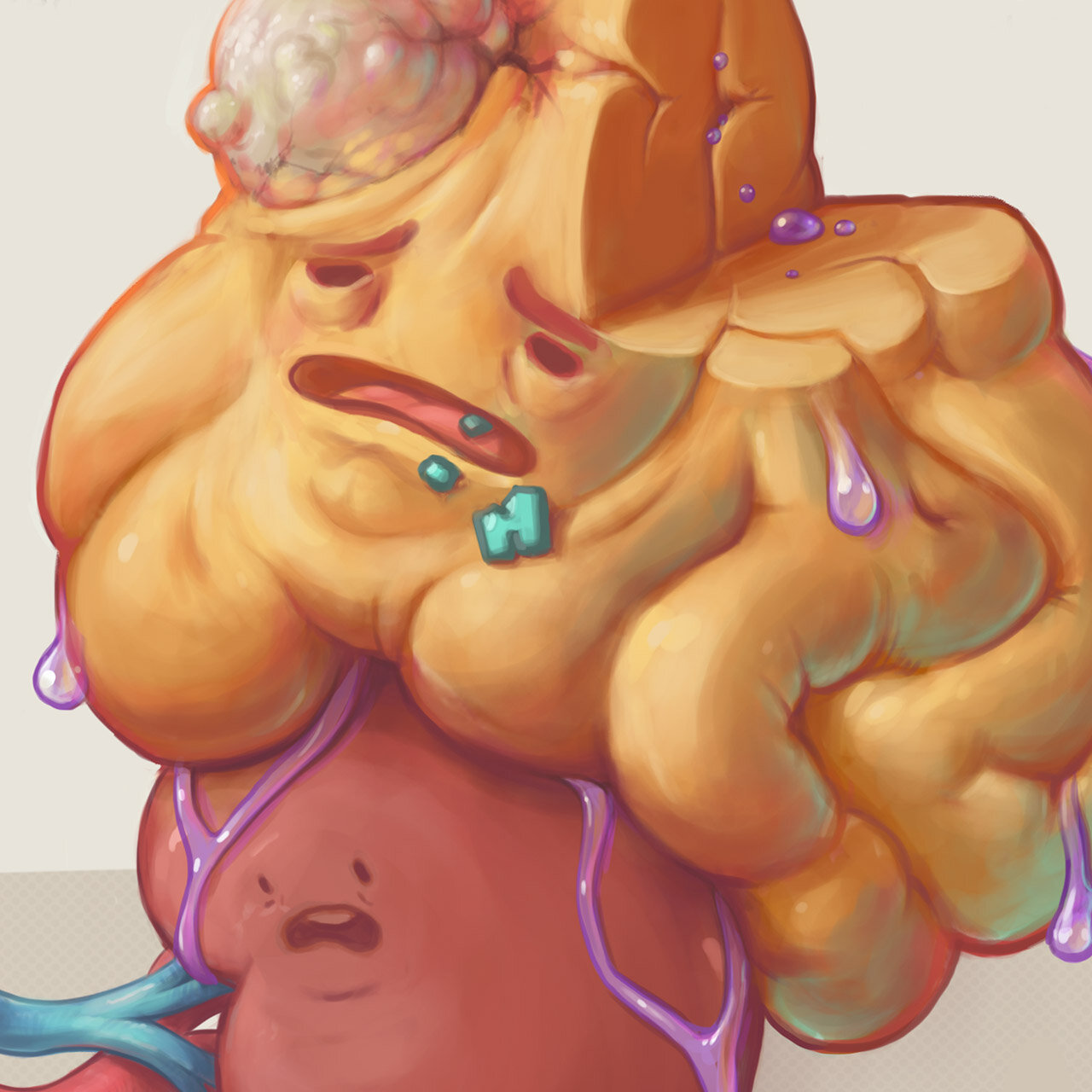Congenital Adrenal Hyperplasia
I designed this art for a new publication in RadioGraphics that summarises the appearance of classic Congenital Adrenal Hyperplasia (CAH) on clinical imaging: https://pubs.rsna.org/doi/10.1148/rg.2021210118. This art is part of a series of monographs exploring rare diseases called 'Cases from the Cooky Jar', for RadioGraphics - a journal supporting training and reference for Radiologists. My goals have been to help share each condition in a memorable way and fill gaps in the literature where there aren’t many (or any!) illustrations - something that I hope can be helpful for patients as well as professionals.
Classic congenital (from birth) adrenal hyperplasia (overgrowth of the adrenal glands) happens when there is a mutation on the gene for 21-α-hydroxylase that prevents the adrenal glands from producing enough of two key steroids: cortisol and aldosterone. The pituitary gland in the brain detects this low cortisol and releases adrenocorticotropic hormone (ACTH) to stimulate the adrenals to produce more of the hormones they cannot make. No amount of stimulation can change the genetic limitation, so the adrenals keep growing.
While they can't produce cortisol or aldosterone properly, the adrenals can still produce androgens, a sex hormone, and so all this overgrowth (hyperplasia) leads to high levels of androgens. The low and high levels of these different hormones causes the symptoms of the condition.
At birth, babies of XX female sex may have ambiguous genitalia due to excess androgens. Babies of XY male sex may have hyperpigmented (dark) nipples and scrotum, but this is often missed, leading to a diagnosis days to weeks later in a salt-wasting adrenal crisis due to low aldosterone. Those with Congenital adrenal hyperplasia will take replacement hormones for life, with extra steroids when unwell to prevent an adrenal crisis. With proper treatment, they may essentially live symptom-free.
Well, that's all I have for this one. You can read the full case here: https://doi.org/10.1148/rg.2021210118. If you would like to see more behind-the-scenes about how I design my art, sketches, abandoned concepts, etc - be sure to check out my Patreon here: https://www.patreon.com/artibiotics
I have 3 more of these cases to finish up for the final 3 issues of RadioGraphics this year, so I look forward to being able to share more. It has been intense producing these to deadline alongside freelance and full-time research work, but the challenge has been rewarding for levelling up my art, and will hopefully lead to good things!








